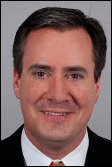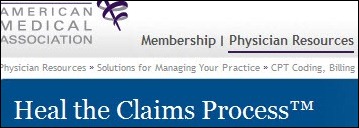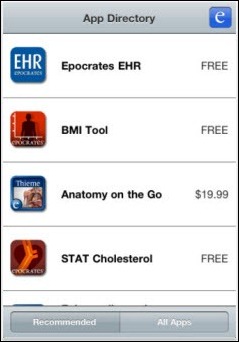From the Consultant’s Corner 11/4/11
5010: Just the Tip of the Iceberg
I’m still firmly stuck in October and all the fiscal year activities that go with it. But my kids already are looking forward, getting excited about the holidays just around the corner. And that got me thinking. Ready or not, the 5010 transaction standards will be in place in just a couple of months.
It really is time to look forward. Not just to 5010, which will bring more clarity and consistency to claims transactions, but also to the conversion to the ICD-10 code sets. Together, these two changes will support more granular healthcare data capture in the future.
Ultimately, that will help us shift healthcare toward reimbursement based on quality outcomes—instead of today’s volume-based “eat what you treat” reimbursement mentality. On the administrative side, these changes should aid efforts to reduce costs and gain more accurate coding, billing, and reimbursement. On the clinical side, all of this should lead to better patient care quality.
But contrary to popular belief, compliance with 5010 doesn’t get you halfway down the road to ICD-10 compliance. Although the two initiatives are related, ICD-10 is far more complex. 5010 readiness is just the tip of the iceberg. Expect ICD-10 to encompass every asset used to treat patients, bill for services, and receive appropriate payment.
Where 5010 affects only electronic claims and remittances, ICD-10 will radically alter the workflow of literally every clinical and operational procedure in healthcare. It will significantly impact the way physicians capture and document clinical data, and will affect the data flow from the electronic health record (EHR) to all other clinical, administrative and billing systems—and all the interfaces in between. Every third-party interface or tool will require testing, evaluation, upgrades and staff training.
Everyone now is intently focused on the fast-approaching 5010 compliance deadline and Meaningful Use. And it’s true that for a short while, meeting Meaningful Use can make some incentive money for you. But ICD-10 can bankrupt you if you’re not prepared.
The level of preparedness varies among industry stakeholders. Some progressive healthcare organizations — including many of our clients—already are getting down to work. One provider I recently visited has budgeted $10 million for ICD-10 so far and considers the investment to be “worth every penny.” Another, an organization that offers a variety of specialties and subspecialties, has more than 1,000 custom-designed EHR templates that need to be redesigned by 2012.
Unfortunately, too many providers expect practice management system (PMS) and EHR vendors to take the initiative. Some PMS and EHR providers are, in fact, well along in their plans and efforts to educate clients about testing and implementation timelines. Others haven’t yet shared their plans. Suffice it to say, if you’re expecting your software vendors to do all the heavy lifting, you may be in for a rude awakening.
You must plan and budget for this massive workload now. I recommend that all healthcare organizations:
1) be cognizant of ICD-10 as they plan all of their upcoming initiatives, and
2) understand their budget constraints and balance resources for ICD-10 appropriately.
Another initiative I recommend for many organizations is to work with payers proactively to negotiate terms to protect cash flow during transition periods based on your claims history (volume, type of services, reimbursement history, etc.). In my experience, some payers will agree to guarantee a percentage of a provider’s account volume according to prior reimbursement levels. At the end of a mutually agreed-upon timeframe, the two parties “settle up” any differences. Obviously, if you’re a large organization with a significant market share, you’ll have more leverage in this kind of negotiation. But because the potential risk to cash flow is so great with ICD-10, it may be an idea worth pursuing.
Like it or not, the 5010 and ICD-10 transitions will strain healthcare IT resources, staff resources, administrators, providers, and capital budgets. But we don’t have a choice about compliance with Meaningful Use, 5010 standards, ICD-10 diagnosis codes, and other government regulations. Savvy providers, IT professionals, administrators, and vendors realize the importance of conducting impact assessments, budgeting for IT and other resources, and planning framework changes to support ICD-10 code sets. Those that do not are in danger of going the way of the Titanic.
Brad Boyd is vice president of sales and marketing for Culbert Healthcare Solutions, a professional services firm serving healthcare organizations in the areas of operations management, revenue cycle, clinical transformation, and information technology.






















Re: Walmart Health: Just had a great dental visit this morning, which was preceded by helpful reminders from Epic, and…